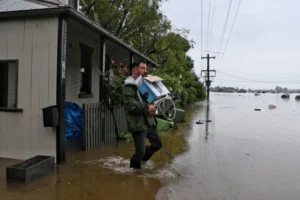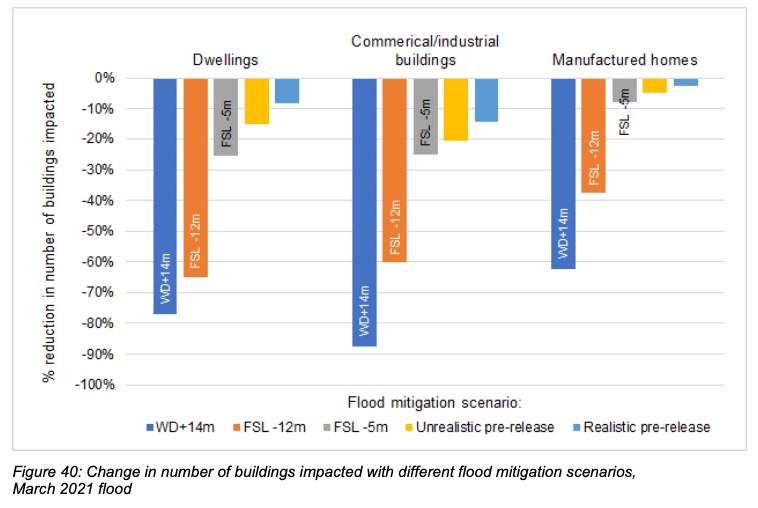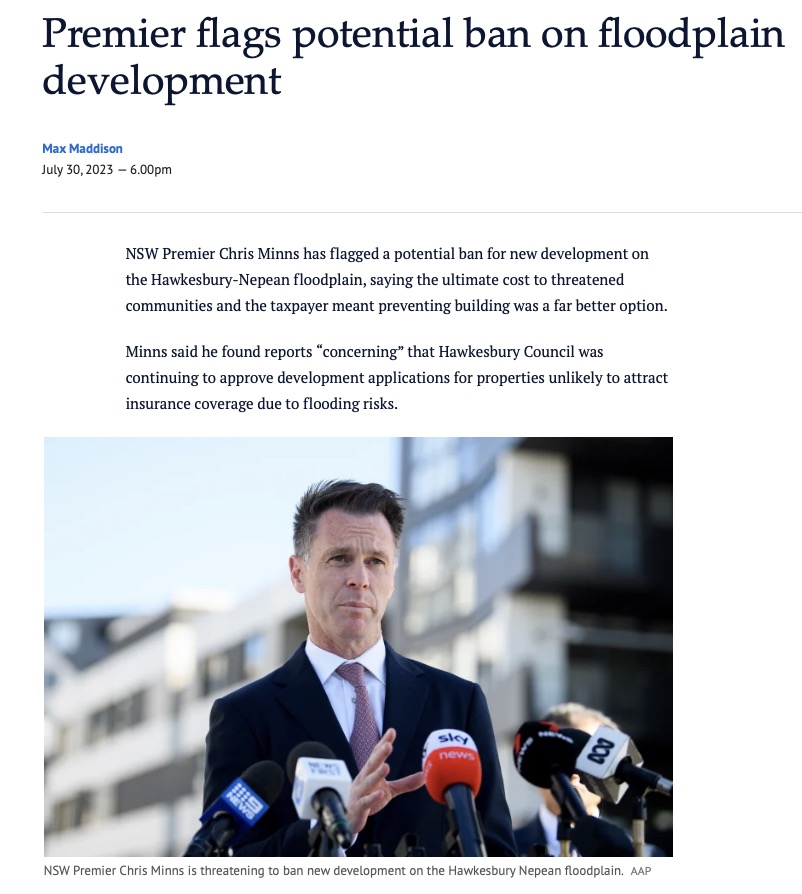Two stories appearing recently in the media criticise Hawkesbury Council for approving DA’s on flood-prone land.
I have been flagging concerns over the statistical inevitability of another serious flood for a decade before my election to Council in 2016.
My support for raising Warragamba dam has always been paired with a demand for more stringent controls on floodplain development. There is no value in capital works for mitigation if we succumb to the temptation to lower the 1:100 limit or intensify urbanisation in areas subject to flood or flood evacuation risk.
The current ‘1:100’ dwelling-height limit of 17.3m at Windsor was introduced in the 1980s. 5000 dwellings already lay along the floodplain below that limit. They were built before flood-height controls existed. Some are in the most historic areas of Windsor and Pitt Town. Others lay low along the river at locations now perceived by everyone (including insurers) as high-risk, like caravan parks.

Some of the approvals reported in the media may be for the reconstruction of dwellings in that category and where an ‘existing use right’ is asserted, even though any new dwelling would never be approved under the current standards. Whether to permit a rebuild is a fraught issue.
Other approvals may be for new development on land that is partly below and partly above the 1:100 limit, and where the floor height of development is confined to the land laying above the limit. It’s legitimate to debate about whether this policy should be readdressed, but flood height controls are not at the discretion of Council; they are State-mandated standards that our Council follows.
‘Buy-backs’ like we’ve seen in Lismore should be on the table, and it’s frustrating that a policy offered in one area of the state is denied to ours where there is arguably greater risk.
Another solution would be to permanently change flood-height controls from the 1:100 limit to a higher one, such as the PMF (Probable Maximum Flood) which is 26.4m at Windsor.
However, we must ask at what cost these measures come. Government policies send signals to insurers. Many residents in established and historic areas of our most beautiful towns are now paying insurance premiums of tens of thousands of dollars and face invidious choices: living uninsured, going broke, or selling up at reduced value, when their houses were duly approved under the laws of the day.
Raising the flood-height limit or buying-and-demolishing existing properties would potentially raze some of our most beautiful, historic and heritage-listed suburbs. The height of the PMF is literally over the roof of the Macquarie Arms Pub in Windsor, meaning if the PMF was the applicable standard, none of Windsor would exist. This is nonsense. None of these outcomes are good enough.
Council’s response includes the adoption of a range of documents, including the recent Local Approval Policy for Caravan Parks (2023), a Flood Policy (2020, amended 2021) the Schedule of Flood Related Development Controls (2021), a Flood chapter in our new DCP (pending), and the Regional Flood Mitigation in the Hawkesbury-Nepean Valley Policy (2011).
Fundamentally, Council must adhere to the current legislative framework which has been gazetted by the State Government. Council is over-ridden by State policy on many fronts. If the State Government changes the development standards relating to flooding requirements then Council will ensure that future development in those areas will adhere to those requirements.
In my opinion the new State government have abandoned Hawkesbury residents by failing to declare what mitigation measures they intend to fund now raising Warragamba has been ruled out – the second such time Labor has done so since 1996. The NSW Premier Chris Minns has even refused to visit the Hawkesbury to explain when and how he will fulfil pre-election promises on measures like levees, and Hawkesbury’s Labor candidate Amanda Kotlash even voted against a motion brought by the Mayor to ask the Premier to visit, which is crazy!
It remains undisputed that if the dam had been raised already, 80% of the 600+ dwellings that were inundated in the recent floods would have been spared completely owing to the flood-peak being 3.4-5.3m lower (p66 of the report). If alternative strategies can’t confer the same or better degree of mitigation, they should admit it and return to raising Warragamba Dam as the best option.


